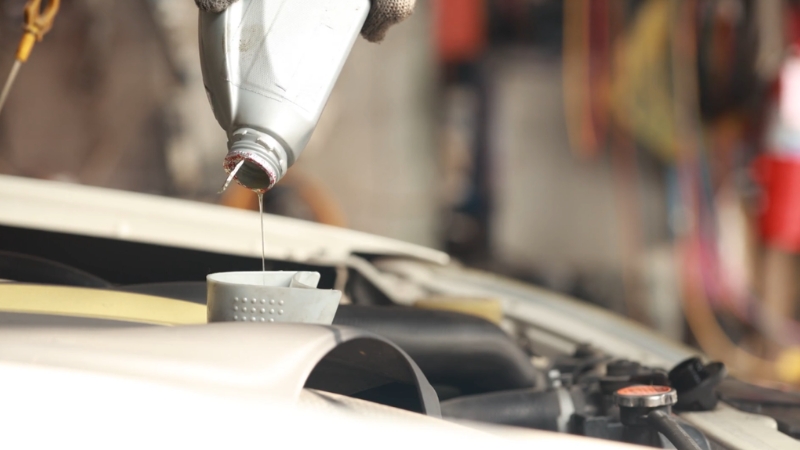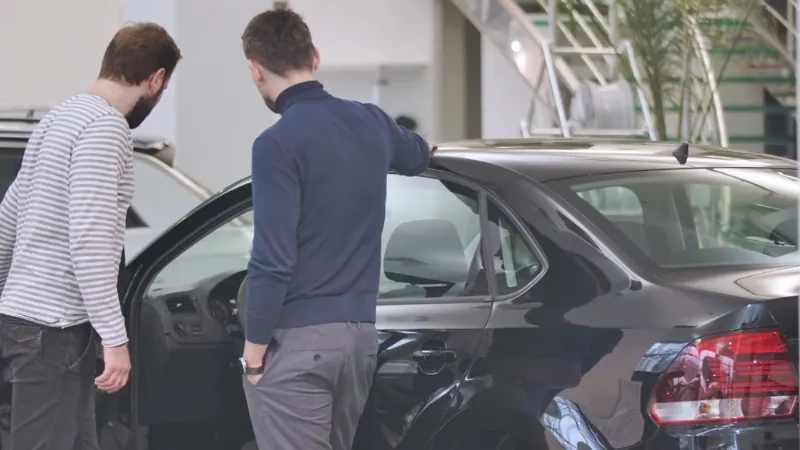
Share Post:
When it comes to Check Engine Light, I have always heard that one quick fix was to disconnect the battery, wait a few minutes, and reconnect it.
Sure, that can reset the light, but I never liked the idea of losing my radio presets, clock settings, and other personal adjustments. Plus, it felt like I was throwing a blanket over an unknown problem rather than actually addressing it.
Over time, I discovered more thoughtful methods that preserve all those personal electronics settings and don’t require fiddling with the battery.
With that said, let me walk you through what has worked for me, and maybe one of these methods will make your next Check Engine Light experience less stressful.
Table of Contents
ToggleReasons to Avoid Battery Disconnection
A lot of people jump straight to disconnecting the battery as a solution. I get it—easy fix, right? But it’s not always the best idea:
- Losing Vehicle Settings: Personal radio stations, seat memory adjustments, climate control preferences—gone in an instant. You’ll have to re-enter everything.
- Interrupted Learning Curves: Modern ECUs learn how you drive and optimize various settings. Cutting off power might cause the ECU to lose that learned data.
- Extra Steps: Sometimes, disconnecting and reconnecting the battery is physically awkward, especially if the battery is hard to reach.
In short, I prefer methods that leave my car’s memory intact. That way, once the light resets, I know all my settings remain exactly how I like them.
A Variety of Reset Methods That Don’t Involve the Battery
I’ve experimented with several approaches over the years and discovered a few that work pretty well. Let’s explore them one by one.
1. Using an OBD-II Scanner (My Favorite Tool)

One of the most straightforward methods involves a small device known as an OBD-II scanner. This nifty gadget plugs into a special port usually located under the dashboard, on the driver’s side. With it, you can read error codes and reset them like a pro.
How I Usually Do It
- Find the OBD-II Port: Usually found beneath the steering wheel area.
- Connect the Scanner: Just plug it in. The fit is easy; it only goes in one way.
- Ignition On (Engine Off): Turn the key to the “On” position, but don’t start the engine. If you can’t, maybe this article will help you.
- Read the Error Codes: The scanner usually has a “Read Codes” function. I check the codes, write them down, and research them later to know what might need fixing.
- Clear the Codes: Most scanners have a “Clear” or “Erase” option. I select it, and voila—the light often goes off.
- Verify by Starting the Car: Turn the engine on and see if the light remains off.
2. Going Through a Full Drive Cycle
Another way I’ve had success is simply driving the car as I normally would. Modern vehicles run their own checks during daily drives, and if the initial trigger is resolved (like a replaced part or tightened gas cap), the ECU may recognize it during a standard set of driving conditions.
My Approach to a Drive Cycle Reset
- Regular Driving, No Special Tricks: Just a mix of city driving and highway speeds over a few days.
- Patience is Key: The light won’t vanish immediately. It might take multiple trips before the ECU says, “Everything’s fine now.”
This requires some waiting around. If the issue really is fixed, the ECU will figure it out eventually. I consider this method the “laid-back” approach—no tools needed, just normal driving.
3. The Key Cycling Trick

I remember the first time I tried this: It sounded too simple, but I gave it a shot anyway. The idea is that turning the ignition on and off in a particular sequence can nudge the system to reset. It might not work for every car, but it’s worth a try.
What I Do
- Insert the Key: Key in the ignition, but do not start the engine.
- On and Off Moves: Turn to “On” (no engine start) for a few seconds, then back to “Off.”
- Repeat About Three Times: After cycling it three times, on the fourth turn, actually start the engine.
- Check the Light: If luck is on your side, the light goes out.
This approach might feel like an old wives’ tale for cars, but I have seen it work on certain older models. There’s no harm in trying, especially if you’re stranded somewhere without tools.
4. Giving the Gas Cap a Proper Check
You’d be surprised how often a loose gas cap can trigger that dreaded light. The car’s emission system is sensitive to even small leaks, and a poorly seated gas cap can mimic a more serious issue. Also, cleaning your charcoal canister can help too.
My Steps
- Open the Fuel Door: Take off the cap and look closely.
- Inspect the Seal: Make sure the rubber gasket isn’t cracked.
- Tighten Properly: When screwing it back on, turn until it clicks several times.
- Give It Some Time: If that was the cause, the light often goes off after a handful of drives.
If the gas cap seems worn or damaged, a replacement is a cheap and simple fix. No fancy tools, just a new cap.
5. The ECU Fuse Pull Method

For older cars, I’ve tried pulling the ECU fuse out, waiting a moment, then putting it back. It’s like a mini “reset” button for the computer without disconnecting the battery entirely.
How I’ve Done It
- Consult the Owner’s Manual: Locate the fuse box and figure out which fuse controls the ECU.
- Fuse Removal: Use a fuse puller (usually included in the fuse box) to remove the correct fuse.
- Wait About a Minute: Just enough time for the ECU to lose power.
- Reinsert the Fuse: Put it back where it belongs.
- Start the Engine and Check: The light often disappears if the issue is resolved.
6. Using the Gas Pedal Method (Vehicle-Specific)
I’ve heard of certain cars allowing a reset by using a combination of ignition and gas pedal movements. It’s kind of cool, but it depends heavily on the car’s make and model.
The Steps I’ve Seen
- Vehicle Off: Start with the engine off.
- Gas Pedal Down: Press and hold the pedal fully.
- Turn Ignition On (Engine Off): Don’t start it, just turn to the “On” position.
- Hold 10-15 Seconds: Keep that pedal pressed.
- Release and Turn Off: Let go of the pedal, turn the ignition off again.
- Start the Engine: Check if the light disappeared.
I haven’t tried this on many cars, but I’ve seen it work on a friend’s vehicle. It’s one of those quirky procedures that feel like a secret handshake.
Making Sure the Root Cause Is Addressed

I have to emphasize something important: resetting the Check Engine Light doesn’t magically fix what caused it in the first place. The goal should never be to just shut it off and forget about it.
If the engine had a misfire, a failing sensor, or an emissions leak, that must be taken care of. Otherwise, the light will come back on, and you might risk more significant damage.
When I see a code, I do some homework. Online forums, official service manuals, and conversations with friends who know cars better than I do can help me get a better grasp of what’s going on.
Sometimes, I’m comfortable fixing it myself. Other times, I go straight to a trusted mechanic. The important thing is not to leave a genuine problem unchecked.
Consult the Owner’s Manual and Seek Professional Help
Cars differ more than we might think. I always keep my owner’s manual handy. That guide can offer model-specific tips and instructions that I might not have found anywhere else.
If the light sticks around despite attempts to reset it, I might be dealing with a more serious issue. In that case, a trip to the mechanic can pay off in the long run.
Many shops can quickly diagnose the problem, provide a thorough explanation, and offer a reasonable fix.
Additional Tips and Friendly Advice
I’ve learned a few extra pointers over time:
- Don’t Panic: The light can trigger for minor reasons. Panicking doesn’t help.
- Basic Maintenance Helps: Keeping up with oil changes, air filter replacements, and using quality fuel can prevent those pesky warning lights.
- Use Reliable Sources: If you’re unsure about a specific error code, you can always rely on official manuals, reliable online communities, or a certified mechanic. There’s a lot of questionable advice out there.
- Keep Track of Repairs and Codes: If I ever plan to sell the car, having a log of what codes appeared and what fixes I performed can show prospective buyers that I took care of my vehicle.
A Word on Safety
A glowing Check Engine Light is often a gentle nudge, not a screaming alarm. But sometimes it can signify a more urgent concern. If the light is flashing, that’s usually more serious.
For major issues, I pull over safely and consider calling a tow or seeking immediate professional help. It’s not worth risking further damage or compromising safety by continuing to drive.
I also encourage friends and family to stay curious about what their cars are telling them. The ECU, sensors, and the light itself form an early warning system.
Putting It All Together
I’ve explored multiple ways to reset a Check Engine Light without resorting to battery removal. Some approaches are as simple as key cycles or checking the gas cap. Others rely on modern tools like OBD-II scanners, which give a clearer picture of what’s going on inside the car.
The main takeaway is that resetting the light is never the entire solution. It’s a step that often comes after either fixing the root cause or verifying that the issue was something as trivial as a loose gas cap.
By treating the light as a helpful guide rather than an enemy, I’ve found that I can approach car maintenance with more confidence and less fear.
Related Posts:








